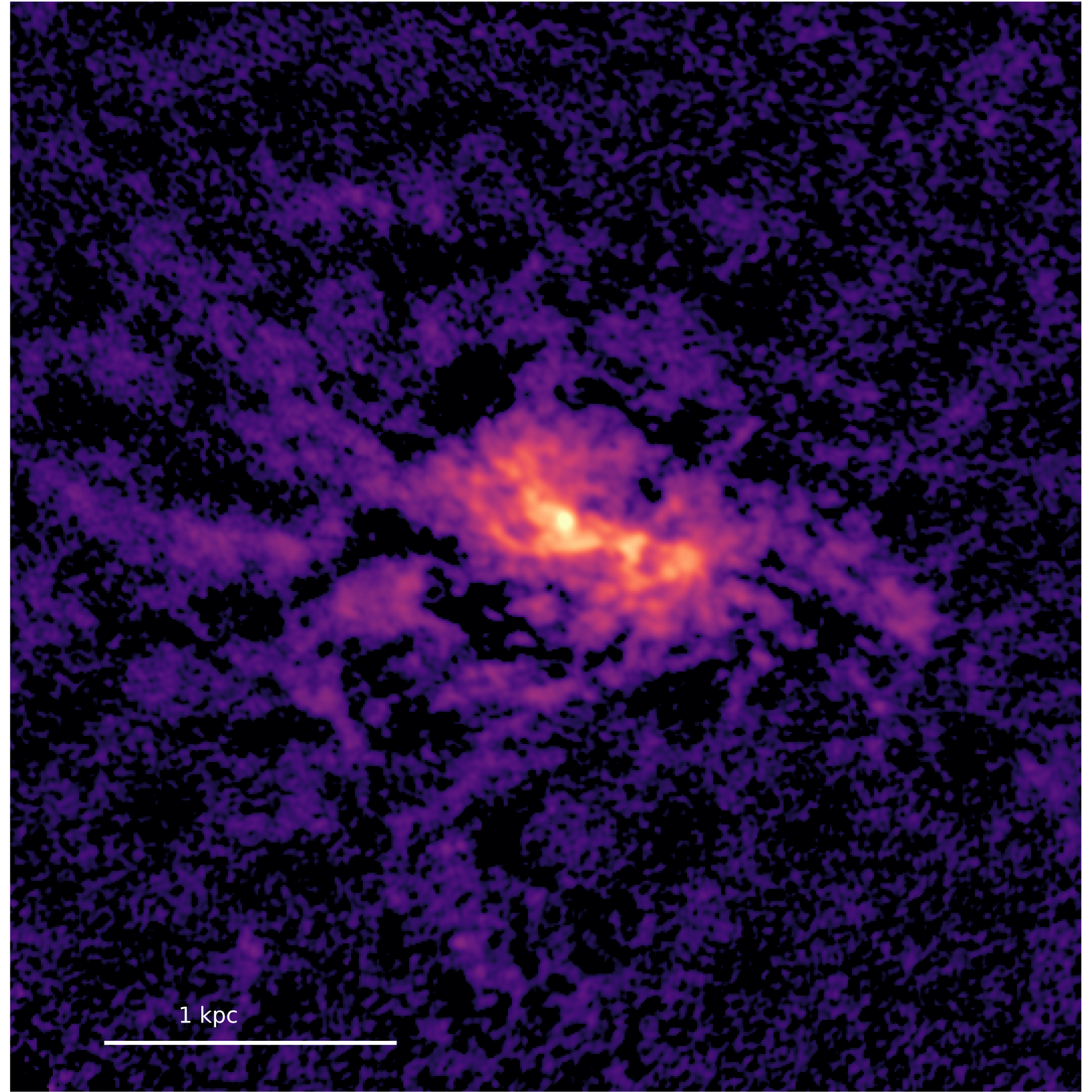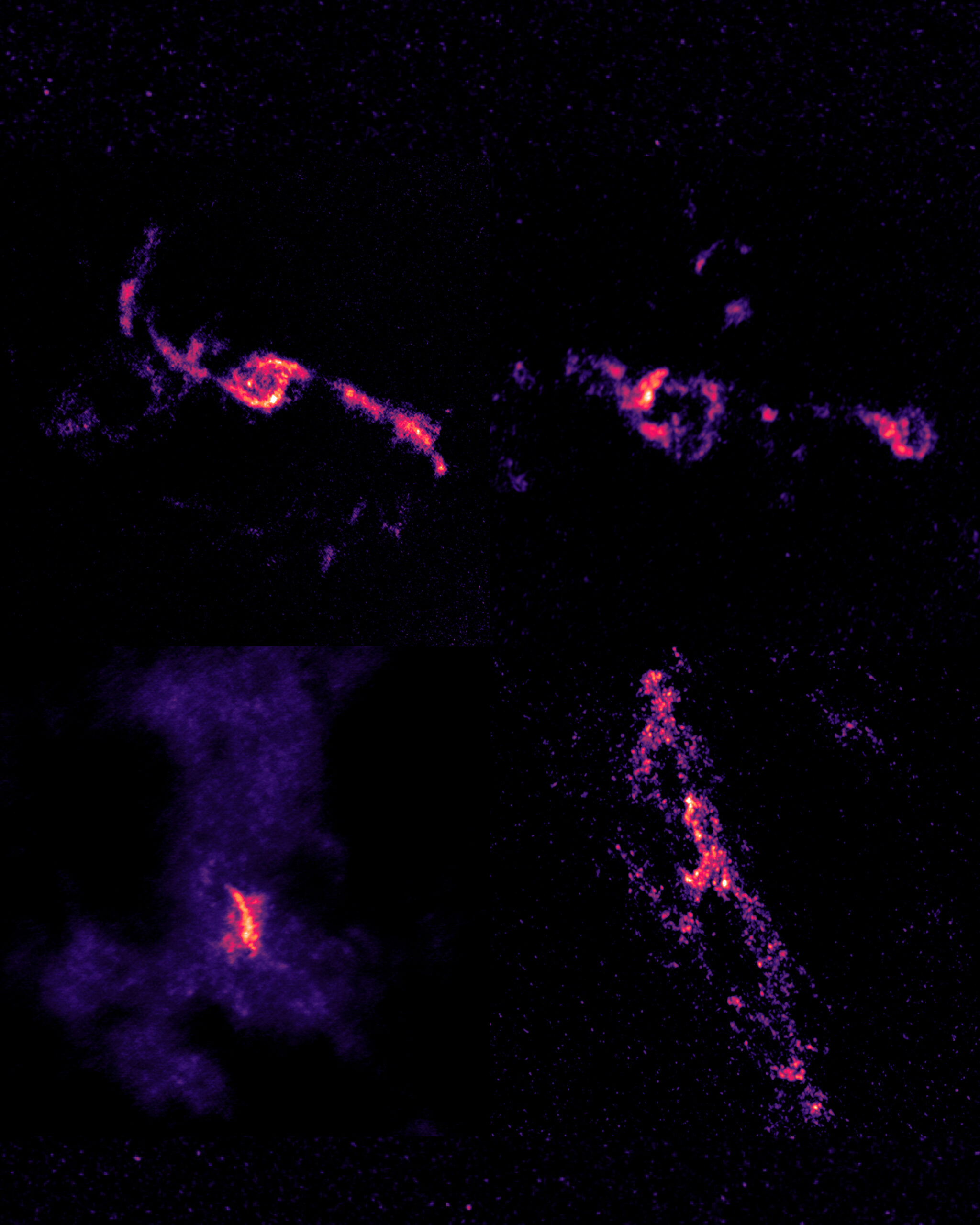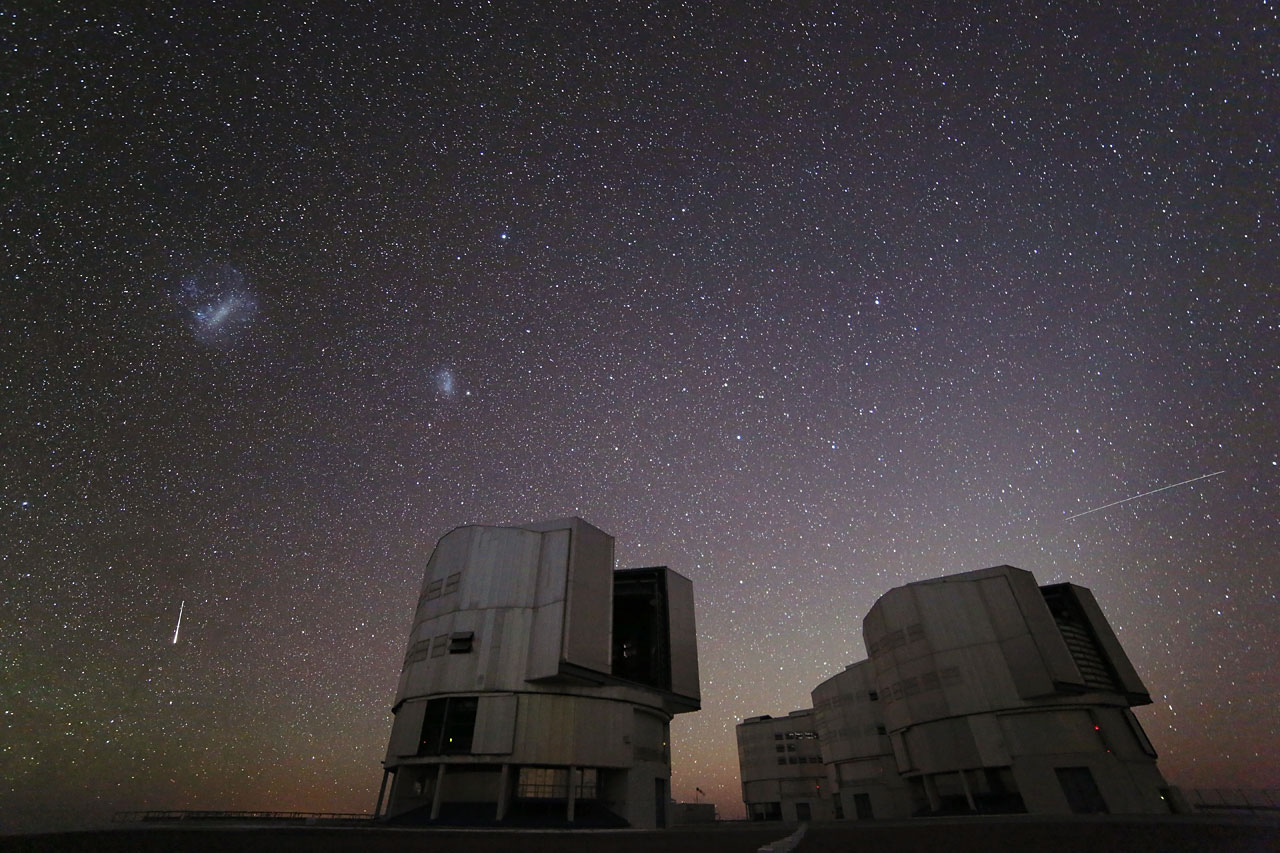
Study of dust in “Cigarette Galaxy” could provide insight into star formation and life under extreme conditions
A study could provide insight into the life and formation of stars under extreme conditions in the local universe. The work is led by Dr. Vicente Villanueva, Postdoctoral Researcher at the Center for Astrophysics and Related Technologies (CATA), where new observations taken with the James Webb Space Telescope (JWST) and the Northern Extended Millimeter Array (NOEMA) were presented.
A research, led by Chilean Dr. Vicente Villanueva, Postdoctoral Researcher at the Center for Astrophysics and Related Technologies (CATA) and astronomer at the University of Concepción, would allow to know the life and formation of stars in extreme conditions within the local universe. The work was applied inside the galaxy M82 (or known as the “Cigar Galaxy”), the galaxy with the closest explosive star formation to the Milky Way.
The study, recently published in the journal Astronomy & Astrophysics, also includes the participation of Dr. Rodrigo Herrera-Camus, Associate Researcher at CATA and professor at the Universidad de Concepción. Both, together with Dr. Alberto Bolatto of the University of Maryland (researcher in charge of data acquisition), presented new observations taken with the MIRI (Mid InfraRed Imager) instrument aboard the James Webb Space Telescope (JWST), and complemented with data from the Northern Extended Millimeter Array (NOEMA), located in Europe.
The astronomers focused on M82 because of its proximity to the Milky Way, which is approximately 11.7 million light-years away, experiences strong galactic winds, and has served as an excellent analog of star-forming galaxies in the early universe. The objective was to study the emission of dust particles known as polycyclic aromatic hydrocarbons (PAH), which are detected at different wavelengths depending on their size, and of carbon monoxide (CO), the tracer molecule of the immediate fuel for star formation. Both provide information about the energy being emitted in galaxies and the physical conditions they harbor.
“What happens in these galaxies is that they have a lot of energy injection, because there are a lot of stars forming and, therefore, a lot of radiation is emitted. These particles (PAHs) in M82 are excited differently than in other galaxies with similar star formation rates to the Milky Way, where the smaller ones are more difficult to excite than the larger ones. What is relevant in this study is that we have compared the relationships between molecular gas, which is the most immediate fuel for star formation, and dust emission from these molecular clouds (also essential for star formation) between normal galaxies and M82,” says Vicente Villanueva.
The researcher highlights the work done with the James Webb telescope using MIRI in the range 7.7 -11.3 micrometers, from which images were obtained in the F770W and F1130W filters that allowed the PAH and CO emissions to be analyzed as never before and compared with each other. The investigation of the emission of these molecules is crucial because it allows astronomers to analyze the composition of the interstellar medium, the energetic and dynamic conditions in star formation in galaxies such as the “Cigar Galaxy”. In addition, by observing these features, information can be inferred about star formation processes and how the environment affects the chemistry of gas and dust in galaxies.
“Dust plays a key role in galaxies because it is a way to give more heavy elements to the interstellar medium. When dust is present, even though it represents a tiny fraction of the interstellar material, it greatly changes the physics of the stars because it increases the opacity of the atmospheres, not allowing the stars to grow too much when they are forming. As a consequence, stars in formation end up being of medium size like our Sun, which was born from a molecular cloud that had a lot of dust,” emphasizes Villanueva.
The CATA researcher states that one of the important results of the study is that “when one compares the linear (almost ‘one-to-one’) relationship seen in normal galaxies between PAH and CO emission, we note that these relationships vary in the extreme environment of M82, giving clues to distinct energetic mechanisms capable of altering the interstellar medium even more significantly”. Even so, the astronomer emphasizes that similar studies also seek to answer other open questions left by this work. Among others, it is necessary to verify whether the dust particles help to remove the molecular clouds that form stars from the galaxies, and consequently to extinguish the formation of new stars or simply to violently excite these structures to finally destroy them.
Chile’s long-term role in this research
This research offers new information on how the galactic environment and the particles present can affect star formation, while providing clues about the evolution of similar galaxies in the early universe. Such studies are essential for advancing our understanding of star formation and galaxy dynamics over time.
Villanueva comments that thanks to the JWST it was possible to obtain and analyze the emission images of the hydrocarbons and carbon monoxide present in these observations. The role of NOEMA consisted in obtaining the best visibility of M82 for CO data, since this galaxy is not visible from the southern hemisphere. However, this may change in the future and provide more precise details from Chilean soil by investigating similar galaxies.
“In Chile there are many projects already under construction that will break records in terms of access to observations of the early universe. Projects like the Extremely Large Telescope (ELT), Giant Magellan Telescope (GMT) and Vera Rubin are going to generate detailed information like no combination of telescopes in the history of mankind has consolidated so far. Chile will practically become the most important ‘eyes to the skies’ in the world in the coming decades, and this is a technological and political challenge for our country; we certainly need to be up to the challenge”, said the CATA – UdeC postdoctoral researcher.
Recent news
-
 Publicado el: 22/12/2025International study reveals that black holes feed selectively
Publicado el: 22/12/2025International study reveals that black holes feed selectively -
 Publicado el: 20/12/20253I/ATLAS: the interstellar comet approaching Earth and what is known about it
Publicado el: 20/12/20253I/ATLAS: the interstellar comet approaching Earth and what is known about it -
 Publicado el: 18/12/2025Ministerial Advisory Committee for Astronomical Observation submits its final report
Publicado el: 18/12/2025Ministerial Advisory Committee for Astronomical Observation submits its final report -
 Publicado el: 13/12/2025Geminids 2025: facts and how to observe the last meteor shower of the year
Publicado el: 13/12/2025Geminids 2025: facts and how to observe the last meteor shower of the year -
 Publicado el: 12/12/2025Call for applications for the CATA Emprende 2026 program now open
Publicado el: 12/12/2025Call for applications for the CATA Emprende 2026 program now open
Categories list
- Acknowledgments 21
- Astrobiology 6
- AstroCluster 1
- Black holes 20
- Corporativo 58
- Cosmology 5
- Descubrimientos 23
- Disclosure 74
- Exoplanets 14
- Extension 7
- Galaxies 22
- Galaxies formation 6
- Inter y Transdisciplina 4
- Local Universe 17
- Publications 6
- Sin categorizar 34
- Solar System 23
- Stellar formation 8
- Technology 16
- Technology Transfer 18
